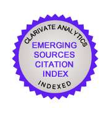The Aesthetics and Symbolism of Antoni Gaudí's Palau Güell
DOI:
https://doi.org/10.22530/ayc.2024.26.672Keywords:
Palau Güell, forms, geometry, symbolismAbstract
This paper deals with disclosing the symbolic meaning of Palau Güell. To do this, we will first analyse the different lines and forms present in the building, identifying a main module. Secondly, we will locate the central place where this module is present, showing how the rest of shapes relate to it forming a harmonic unity. Thirdly, we will recognize the kind of geometry that is at the base of this eurythmic beauty and that contributes to having a particular aesthetic experience. Fourthly, the knowledge of this geometry will allow us to decipher the symbolic meaning of this work, which aims at giving more strength to the ideas of Catalan Renaixença, both in its political and religious dimensions.
Finally, I will show how Palau Güell is linked to other works located in the city, and also outside it, where a similar type of geometry is present.
References
ADORNO, Theodor W. (1998): Ästhetische Theorie. Suhrkamp, Frankfurt am Main.
BASSEGODA I NONELL, Joan (1989): El gran Gaudí. Ausa, Sabadell (Barcelo-na).
La Biblia, Biblia Catalana Traducció Interconfessional (1993). Claret, Barcelona.
DREESBACH, Martha (1957): “Pater Desiderius Lenz OSB, Theorie und Werk“. Studien und Mitteilungen zur Geschichte des benedicktiner-Ordens und seine Zweige, vol. 68. Munich, p. 5-183.
ECO, Umberto (2004): Historia de la belleza. Editorial Lumen, Barcelona.
FREUD, Sigmund (1974): Studienausgabe. S. Fischer, Frankfurt am Main.
GONZÁLEZ, Antoni, and LACUESTA, Raquel (2013): El Palacio Güell. Una obra maestra de Antoni Gaudí. Diputació de Barcelona, Barcelona.
HENSBERGEN, Gijs van (2001): Antoni Gaudí. Plaza y Janés, Barcelona.
KRINS, Hubert (1998): Die Kunst der Beuroner Schule. Wie ein Lichtblick von Himmel. Beuroner Kunstverlag, Beuron.
LACUESTA CONTRERAS, Raquel, and GONZÁLEZ TORAN, Xavier (2019): Eusebi Güell i Bacigalupi: poder, catalanitat, cultura, art. Diputació de Barcelona, Barcelona.
LENZ, Desiderius (2002): The Aesthetics of Beuron and other Writings. Francis Boutle, London.
MATAMALA, Joan (1999): Antoni Gaudí. Mi itinerario con el arquitecto. Claret, Barcelona.
NIETZSCHE, Friedrich (1988): Kritische Studienausgabe. Walter de Gruyter, Munich.
PUIG-BOADA, Isidre (1981): El pensament de Gaudí. Compilació de textos i co-mentaris. Publicacions del Col·legi d’Arquitectes de Catalunya, Barcelo-na.
RÀFOLS, J. F. (1960): Gaudí (1852-1926). Aedos, Barcelona.
RIUS SANTAMARIA, Carles (2011a): Gaudí i la quinta potència. Publicacions i Edicions de la Universitat de Barcelona, Barcelona.
RIUS SANTAMARIA, Carles (2011b): Schelling essencial. “El arte es la única y verdadera revelación”. Mataró (Barcelona), Montesinos.
RIUS SANTAMARIA, Carles (2011c): Antoni Gaudí: Casa Bellesguard as the Key to His Symbolism. Publicacions de la Universitat de Barcelona, Barcelona.
RIUS SANTAMARIA, Carles (2020): “Park Güell: Reconstructing the Temple of Jerusalem through Light and Aesthetic Geometry”. Matèria. Revista In-ternacional d’Art. Barcelona, nº 16-17, pp. 171-198.
RIUS SANTAMARIA, Carles (2023): “The Güell Pavilions of Antoni Gaudí as an example of new mythology”. De Arte. Revista de Historia del Arte. León, nº 22, pp. 225-245.
SCHELLING, F. W. J. (1927-1954): Schellings Werke. C.H. Beck/R. Oldenbourg, Munich.
SIEBENMORGEN, Harald (1983): Die Anfänge der “Beuroner Kunstschule”. Peter Lenz und Jakob Wüger 1850-1875. Sigmaringen, Jan Thorbecke.
VERDAGUER, Jacint (2003): L’Atlàntida. Quaderns Crema, Barcelona.
VORÁGINE, Santiago de la (2004): La leyenda dorada. Alianza Editorial, Ma-drid.
WOLFF, Odilo (1913): Der Temple von Jerusalem. Eine kunsthistorische Studie über seine Masse und Proportionen. Anton Schroll, Vienna.
Downloads
Published
How to Cite
Issue
Section
License
Copyright (c) 2025 ARTE Y CIUDAD. Research Journal

This work is licensed under a Creative Commons Attribution-NonCommercial 4.0 International License.











